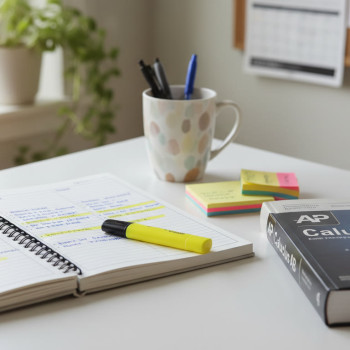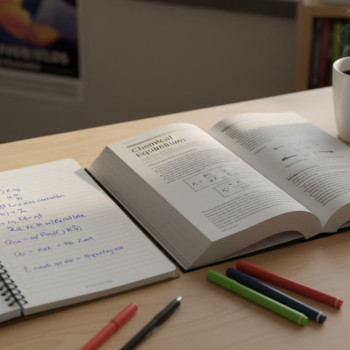Reading for Theme: Skim, Scan, Detail — Why a Three-Step Approach Works
There’s a quiet moment during every AP exam when the clock hums and a passage sits on the page like a puzzle. Theme questions can feel especially slippery: they ask you to move from what an author says to what an author means, to synthesize tone, details, and structure into a single interpretation. The good news? Theme isn’t magic. With a simple, repeatable method—Skim, Scan, Detail—you can convert anxiety into confidence, uncover deeper meaning faster, and keep more time for complex analysis and writing.
This guide walks you through that three-step approach with practical examples, a realistic practice schedule, timing strategies for exam day, and a sample table of how to prioritize details for different AP subjects (English Language, English Literature, and other AP courses that test reading for theme). I’ll also show how targeted support—like Sparkl’s personalized tutoring—can accelerate your progress when you want one-on-one guidance, tailored study plans, and insights driven by experienced tutors and smart analytics.
What Does it Mean to Read for Theme?
Theme is the thread that ties a text’s specifics to a universal idea. It’s less about one-liners you can quote and more about what the work says about human behavior, society, morality, identity, or knowledge. In AP contexts, theme questions test your ability to:
- Identify recurring motifs or ideas.
- Connect character actions, language, or structure to a larger claim.
- Explain how literary devices contribute to meaning.
That sounds broad because it is. But the three-step method helps narrow your focus so theme becomes a predictable skill rather than a guessing game.
The Three Steps: Skim, Scan, Detail
1) Skim: Build a Mental Map (Time: 30–45 seconds)
Skimming is about creating scaffolding. Before you dig into specifics, get a sense of the passage’s terrain: its tone, structure, and what kind of passage it is (argumentative, narrative, descriptive, poetic). Do not try to understand every sentence—just capture the shape.
- Read the first and last paragraph (or opening and closing lines in poems).
- Notice the narrator or voice and any shifts in tense or person.
- Underline or mark—mentally or with a pencil—keywords like however, consequently, but, yet, ironically, and phrases carrying a strong value judgment.
Skimming primes you. On exam day, that 30–45 seconds prevents you from getting lost in detail when a theme question asks for the big-picture claim.
2) Scan: Target Likely Theme Clues (Time: 45–60 seconds)
Scanning is surgical. You’re hunting for the material that most often signals theme: repeated images, obvious contrasts, explicit statements about human nature, and moments of rhetorical emphasis (sentences set off by dashes, colons, or short paragraphs). Move your eyes quickly to those places and gather the candidate lines that might form a theme statement.
- Look for repetition of words or images—water, darkness, travel, machines, eyes, etc.
- Find taut statements about values or judgments—”He believed that…”,”It seemed cruel to…”
- Circle contrasts: public vs. private, appearance vs. reality, youth vs. age.
Make short margin notes: a single word that summarizes each candidate section—”loss,” “authority,” “freedom.” These will be your quick anchors when you write or choose an answer.
3) Detail: Close-Read the Evidence (Time: 2–4 minutes)
Now you dive into the lines that passed your scan. Read them carefully. Ask: How does the language function? What does the syntax emphasize? Which images are repeated, and how are they deployed? For theme, you’re less interested in every factual detail and more in how details function together.
- Annotate with a purpose—note devices (metaphor, irony, diction) and link them to the candidate theme words you recorded.
- Ask why the author included a particular scene or description. Often, small, specific moments illuminate the big idea.
- Be wary of absolute answers—AP theme choices often use qualifiers like “generally,” “sometimes,” or “primarily.” Match nuance.
Putting It Together: A Quick Example
Imagine a short passage about a town where a factory closes and the protagonist watches windows go dark. Skimming gives you: a melancholic tone and a focus on communal loss. Scanning spots repeated images of shutters, light, and clocks. In detail, you note metaphors equating time with consumption—”the town’s appetite for steady work”—and irony in how the factory once promised permanence but left ruin.
From those anchors you can craft a plausible theme: The passage argues that modern work structures promise security but ultimately erode community and identity. You’ve moved from surface facts to an interpretive claim with textual backing.
Timing Strategy: How to Budget Your Minutes on AP Exams
Time pressure is the enemy of careful reading. Here’s a realistic way to ration minutes on passages that require thematic analysis:
- Skim — 30–45 seconds
- Scan — 45–60 seconds
- Detail — 2–4 minutes
- Answering multiple-choice / writing a short response — remaining time as allocated
Example for AP English Language multiple-choice: if you have ~15 minutes for two passages, aim for 5 minutes of reading per passage (sketch, scan, detail) and 5 minutes to tackle the related questions using your notes. Adjust the split based on passage difficulty and your personal reading speed.
How to Annotate Efficiently
Annotations should be fast and functional—few words, clear symbols. Here are compact annotation conventions to try:
- Circle repeated words or images.
- Write one-word themes in the margin (Loss, Freedom, Irony).
- Use brackets [ ] around pivotal sentences.
- Draw an arrow → to link a detail to your candidate theme word.
These simple marks let you return to evidence quickly when you need to pick a multiple-choice answer or support a thesis in a free-response question.

Table: How Devices Typically Support Theme (Quick Reference)
| Device | What to Look For | How It Often Shapes Theme |
|---|---|---|
| Repetition | Repeated words, images, or motifs | Signals the central idea or emotional center |
| Irony | Contrast between expectation and outcome | Reveals critique or skepticism toward social norms |
| Metaphor/Simile | Figurative language linking two domains | Compresses complex ideas into vivid theme cues |
| Structure | Shifts in time, abrupt paragraphs, parallelism | Highlights priorities and narrative focus |
| Diction | Word choice—formal, colloquial, loaded terms | Shapes tone and points toward thematic stance |
Common AP Traps and How Skim/Scan/Detail Helps Avoid Them
AP theme questions are designed to reward precision and punish overreach. Here are common traps and the defensive move from our three-step method:
- Trap: Choosing an answer that is technically true but not central to the passage. Defense: During scanning, prioritize repeated or emphasized elements.
- Trap: Letting one striking detail define the theme. Defense: During detailed reading, check whether the detail is isolated or reinforced elsewhere.
- Trap: Picking an absolute statement when the passage is nuanced. Defense: In skimming, note tonal qualifiers; in detail, find hedging language.
Practice Drills You Can Do This Week
Improvement comes from smart repetition. Here are drills that take 20–40 minutes and sharpen each phase of the method:
- Skim Relay (20 minutes): Take three short passages. Skim each for 30–45 seconds and write a 10–12 word theme. Compare to a model answer or your tutor’s feedback.
- Scan Hunt (25 minutes): For a single passage, list all repeated images and statements of value. Rank them by frequency and strength—this teaches you what the passage privileges.
- Detail Drill (40 minutes): Choose a paragraph and annotate every rhetorical device. Write three sentences explaining how those devices build theme.
How to Turn Notes into a Strong Free-Response or Essay Thesis
Once you’ve used Skim/Scan/Detail to collect evidence, translate it into a claim. A strong thesis does three things:
- States a clear, focused claim about theme (avoid generic statements like “the author is sad”).
- Links theme to a specific device or structural move.
- Is defensible with two or three concrete pieces of evidence you annotated.
Example thesis: Rather than “The author critiques industrialization,” write: “Through recurring images of extinguished windows and ironic references to promises of stability, the author argues that industrialization erodes communal identity by replacing human rhythms with market time.” That thesis signals both theme and the devices you’ll use as proof.
Adapting the Method by AP Subject
Different AP exams ask about theme through different lenses. Here are quick adjustments:
- AP English Language and Composition: Focus on rhetorical choices and how they push an argument about society or ethics.
- AP English Literature and Composition: Pay special attention to character development, narrative perspective, and figurative language that maps onto human experience.
- Other AP subjects with passages (History, Psychology): Translate the theme idea into an author’s perspective, bias, or historiographical claim and look for evidence in framing or selection of facts.
When to Use Sparkl’s Personalized Tutoring
Many students plateau because they practice without feedback. That’s where targeted tutoring helps. If you’re consistently missing subtle questions or struggling to connect devices to theme, consider short-term, focused sessions. Sparkl’s personalized tutoring can help by:
- Providing 1-on-1 guidance on annotation and thesis craft.
- Creating tailored study plans that address your weak spots—timing, close reading, or device identification.
- Giving AI-driven insights and progress tracking so your practice becomes smarter, not just longer.
Use tutoring selectively: aim for sessions that model the Skim/Scan/Detail method on real AP passages, then set micro-goals to implement before the next meeting.

Common Student Questions (Answered)
What if I run out of time?
Prioritize: a solid skim + scan will often get you to the correct multiple-choice choice if you must guess. For essays, a clear thesis and two well-chosen quotations beat a rushed paragraph with no claim. Practice under timed conditions so you learn your personal time cutoffs.
How do I avoid being too rigid?
The three-step method is a scaffold, not a straightjacket. If a passage surprises you, adapt—spend more time on detail or circle back for another scan. The habit you want is quick orientation and targeted evidence gathering, not slavish timing.
How many passages should I practice per week?
Quality over quantity. Start with 3–6 full AP-style passages per week, rotating between language and literature types if you’re preparing for both. Pair practice with review sessions where you analyze mistakes and track patterns.
Sample Two-Week Study Plan (For Busy Students)
Here’s a realistic plan you can follow twelve days out from a practice test or the exam. Each day takes ~45–60 minutes.
- Days 1–3: Focus on Skim & Scan. Do 2 passages/day. Summarize theme in 10–12 words. Review errors.
- Days 4–6: Deep Detail work. Annotate devices in 1 passage/day. Write short 250-word analyses.
- Day 7: Mixed review—timed set of 3 passages, apply full method.
- Days 8–10: Essay integration. Turn your themes into full thesis-driven responses for practice prompts.
- Days 11–12: Mentor or tutor check-ins. Use sessions to target stubborn mistakes and get feedback on timing and thesis clarity.
Final Tips: Mindset, Small Wins, and the Day of the Exam
Reading for theme is as much about habits as it is about skill. Celebrate small wins: a faster skim, a sharper thesis, a question you get right because you noticed an image. On exam day:
- Start with a calm skim—don’t sprint the first minute.
- Trust your annotations. Your marginal notes are there so your brain doesn’t have to hold everything at once.
- If you’re stuck, move—answer related questions and return with fresh perspective.
And if you want an edge, use targeted tutoring to convert hard-won practice into consistent performance. Sparkl’s personalized tutoring can help you create tailored plans, drill the three-step method, and get feedback that turns practice into higher scores.
Wrapping Up: Make Theme Reading Your Habit
Skim, Scan, Detail isn’t a magic formula; it’s a habit loop. Skim to orient, scan to collect the likely clues, detail to interpret and justify. Do it repeatedly, measure progress, and adjust. With steady practice, theme questions stop being traps and become predictable exercises in synthesis. You’ll be able to move from the line-level details to a confident thematic claim—fast, accurately, and with evidence you can point to.
Remember: the best preparation balances independent practice with smart feedback. If you want personalized coaching to speed the learning curve, consider guided sessions that focus on your exact patterns of mistakes, timing needs, and writing style. Good reading is the engine of great writing—and with a reliable method and purposeful practice, you’ll arrive at the exam ready to read for meaning, not just for words.


















No Comments
Leave a comment Cancel